Space Constraints
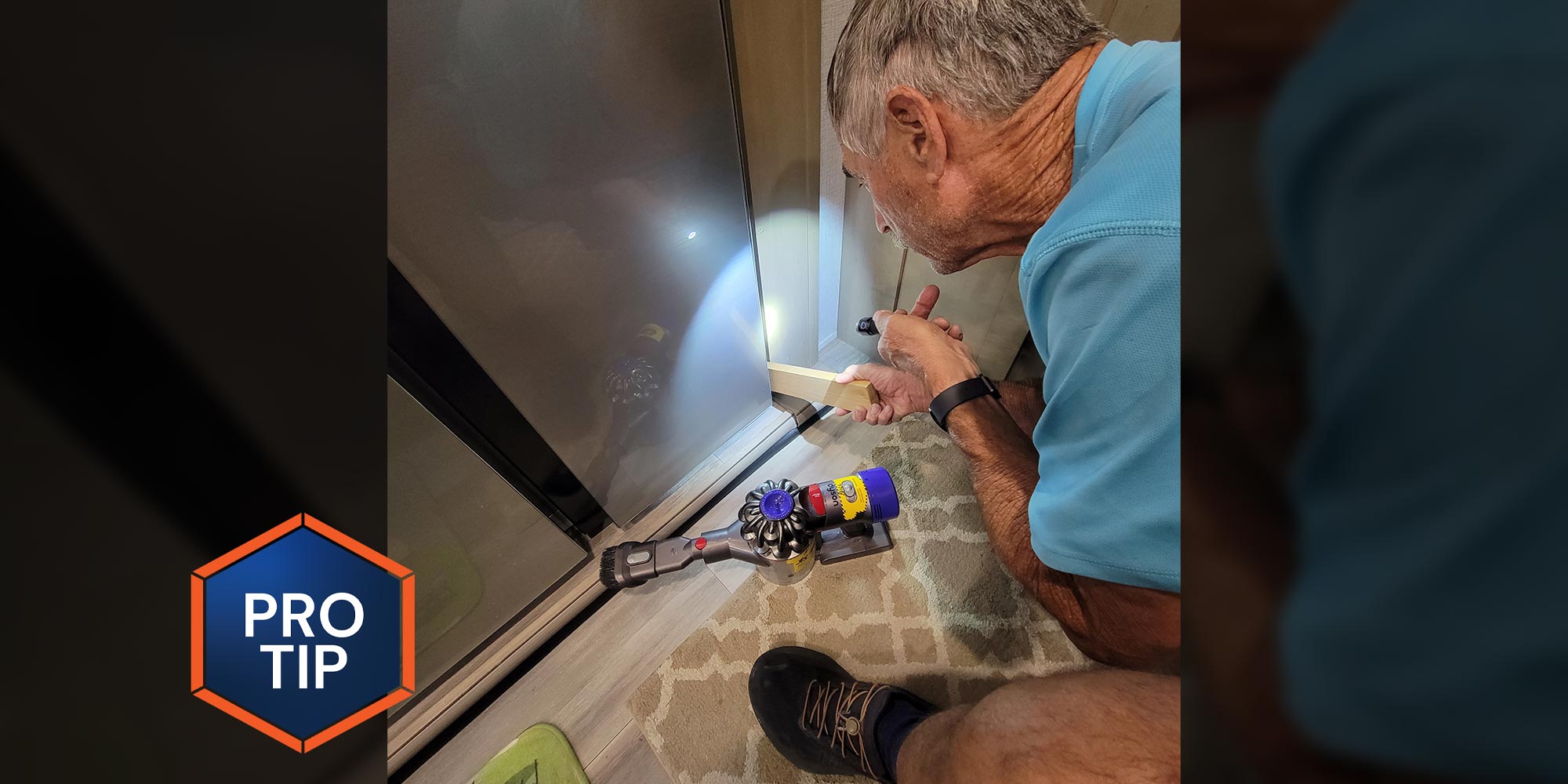
It’s no surprise that RVs collect dirt and dust — especially if you’re a full-timer. The debris tends to build up because more often than not your rig is set up on dirt or gravel in RV parks. And, naturally, this debris usually finds its way into crevices and spaces that are hard to clean.
After living in my new fifth wheel for seven months, I’m finding new places were these dust bunnies and debris collect — like the open space on both sides of the refrigerator. I’m not sure why this space exists, but nevertheless the debris has built up over the last seven months. I can’t imagine what these spaces would look like in seven years without cleaning.
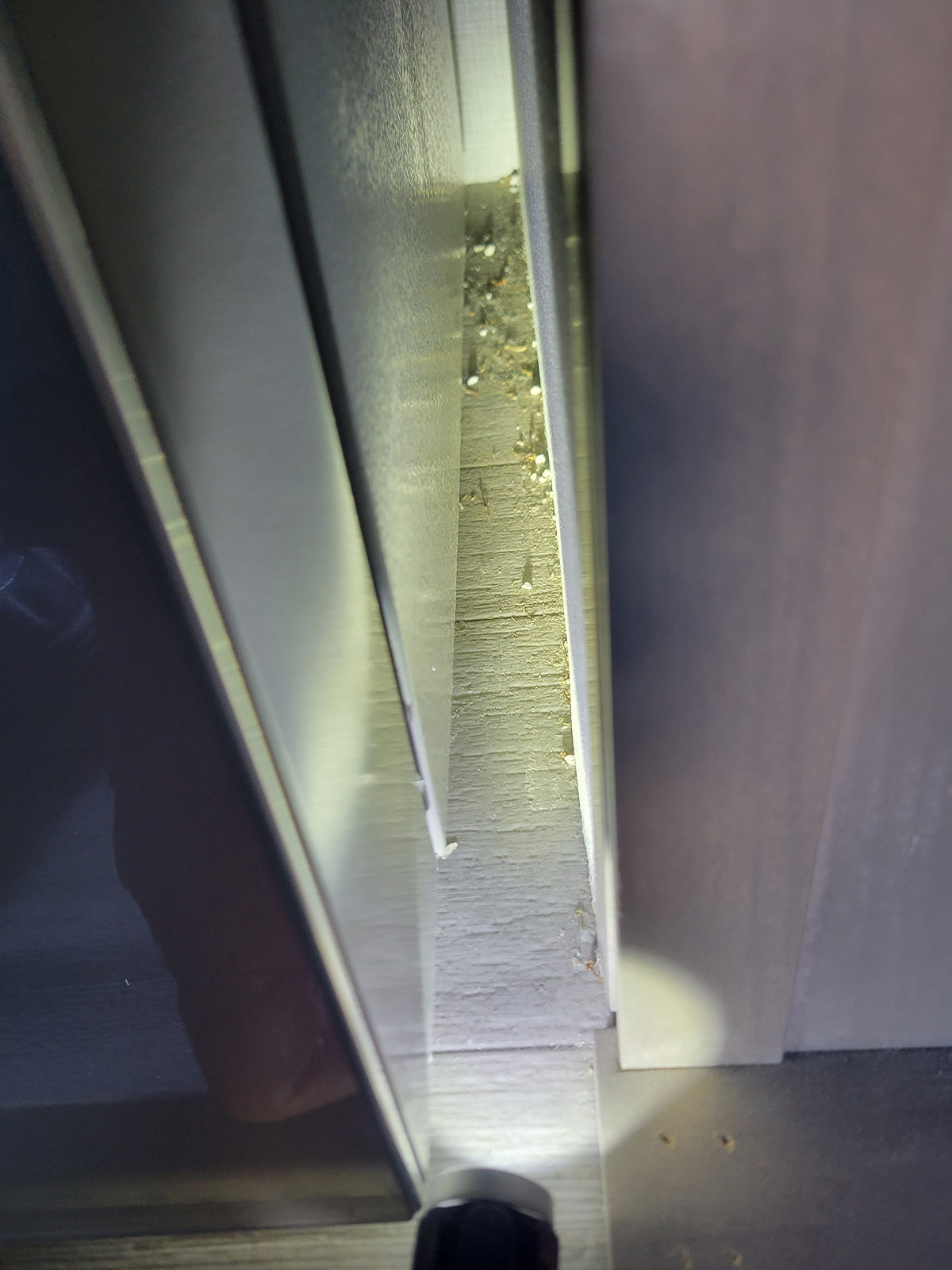
The gaps between the refrigerator sides and the cabinet walls made perfect havens for dirt and debris. There was not enough space to reach in with my hands and arms to clean out the debris, so it had to be picked out with a stick.
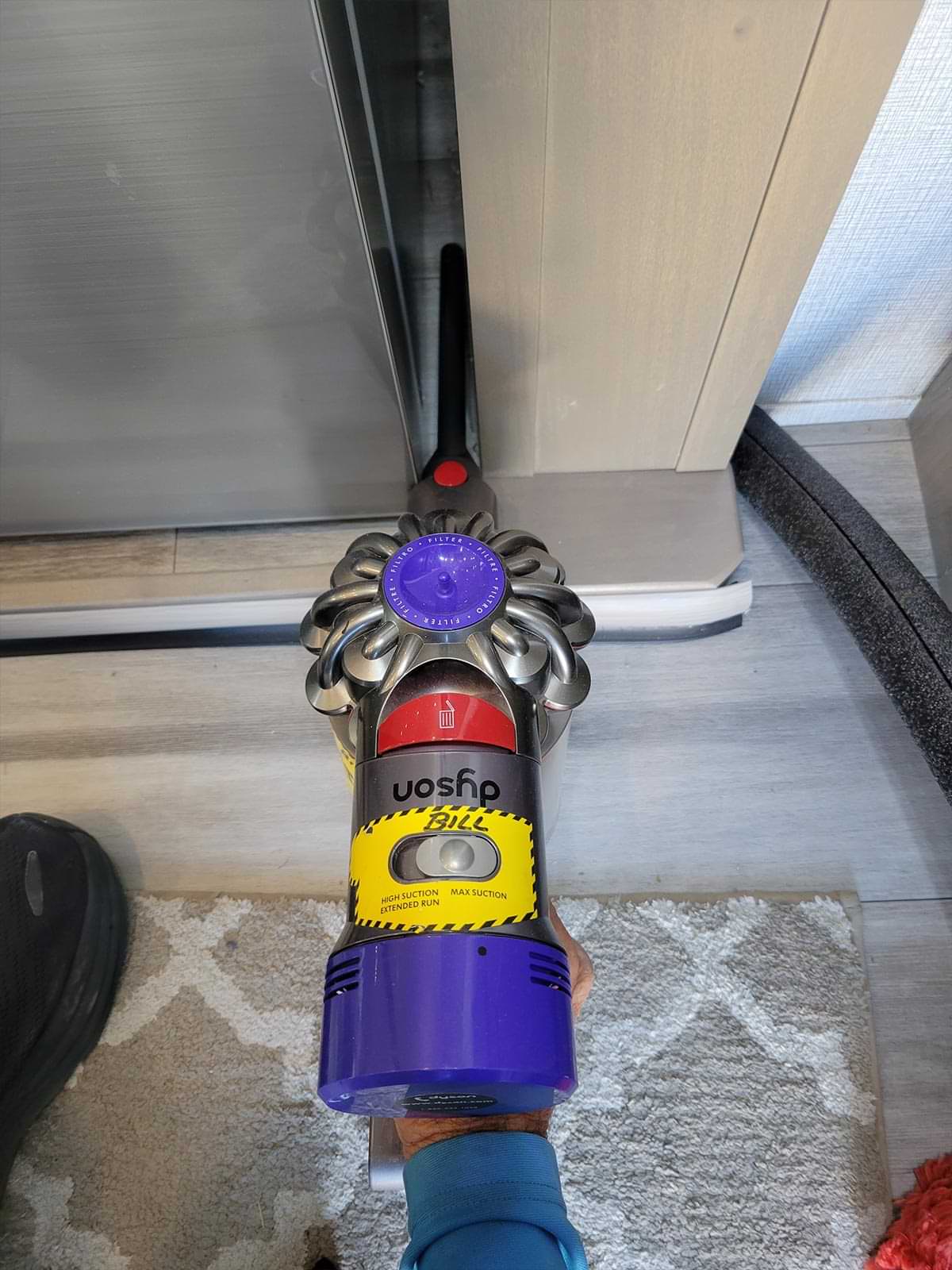
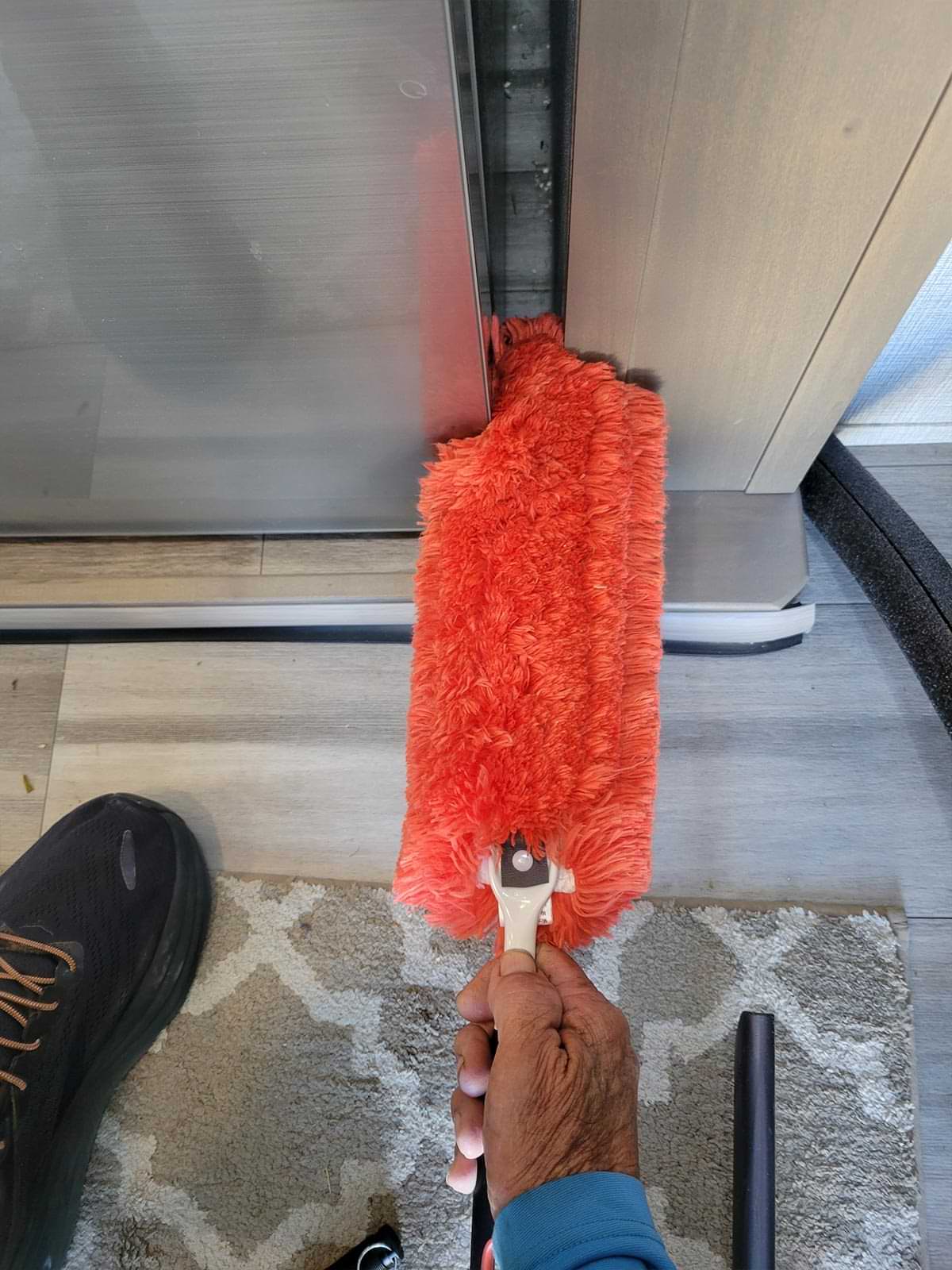
Fortunately, I decided that just closing off the opening would make more sense. Of course, that initially just presented more problems. How? At first, I figured I could permanently stop the dirt by adding a swim noodle between the refrigerator and the walls — leaving the top wide open for ventilation to remove any heat — but the pool noodle was too big and, besides, a bright red or blue pool noodle tends to clash with most interior aesthetics.
Then I happened across an old piece of ¾-inch ID black pipe insulation, which looked like it would do the trick. It collapses just enough to fit snugly between the cabinet walls and the sides of the refrigerator — and the length was long enough to almost reach to the top of the refrigerator.
Rather than use that old, well-worn pipe insulation, I purchased two 6-foot lengths of Everbilt ¾-inch Semi-Slit Polyethylene Pipe Insulation at Home Depot for only $2.11 each. The pipe insulation filled the gaps perfectly, holding in place without adhesives. Of course, I had to fish out the debris on the sides before installing the pipe insulation, but that chore is no longer on my “to do” list.
And, of course, you can use these pipe sleeves to insulate crevices or cracks in other places where cold air finds its way into the RV.
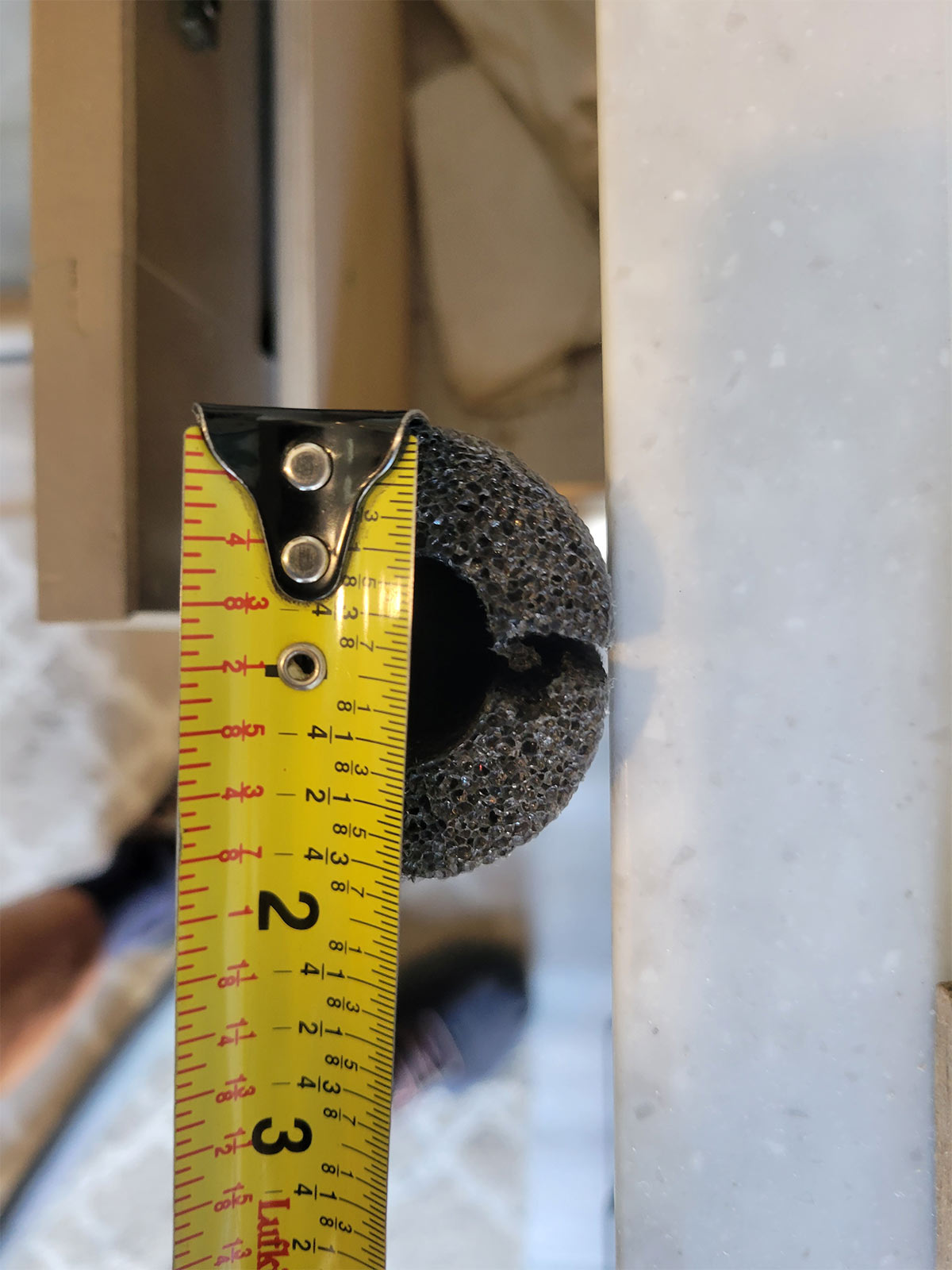
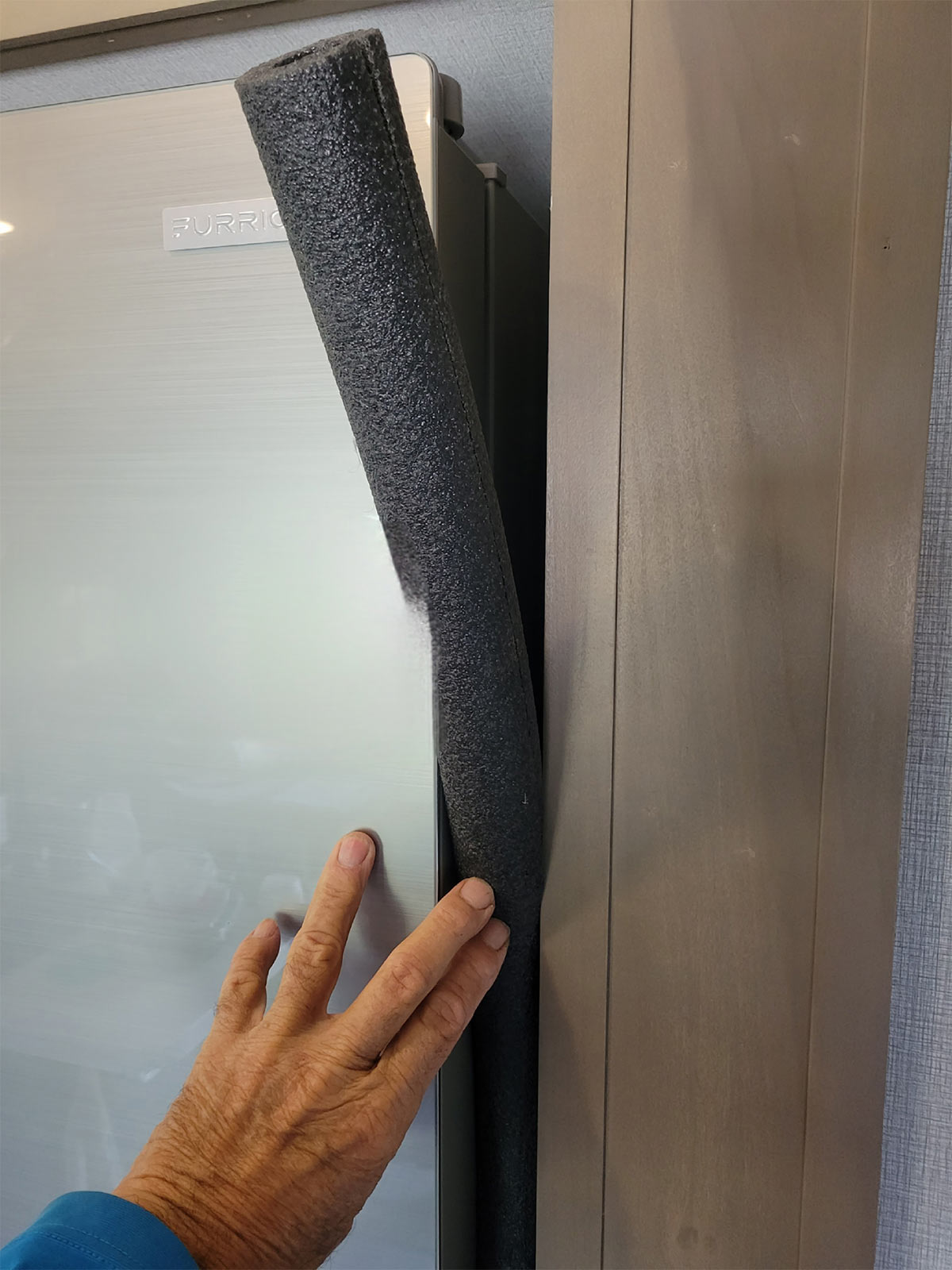
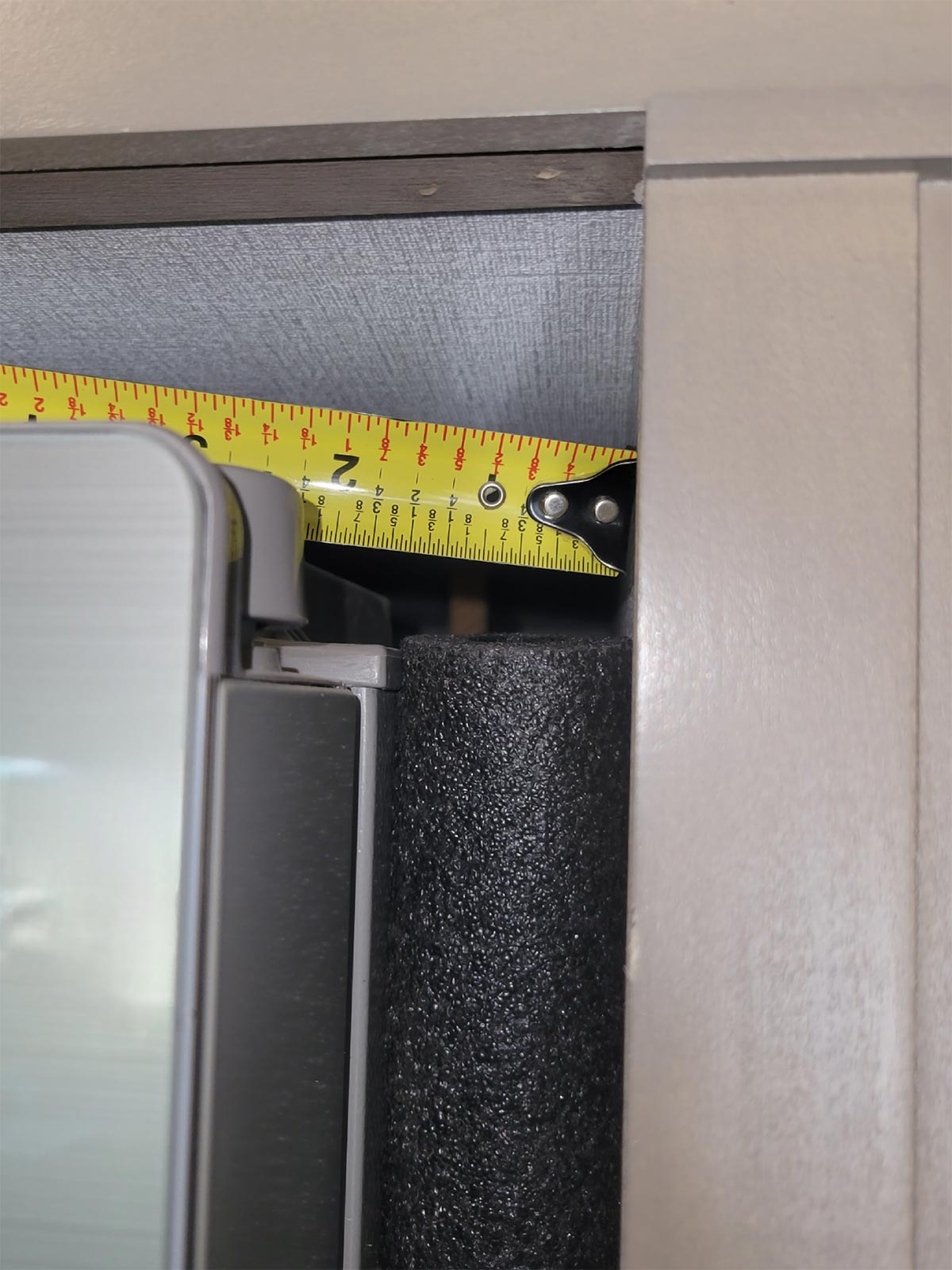
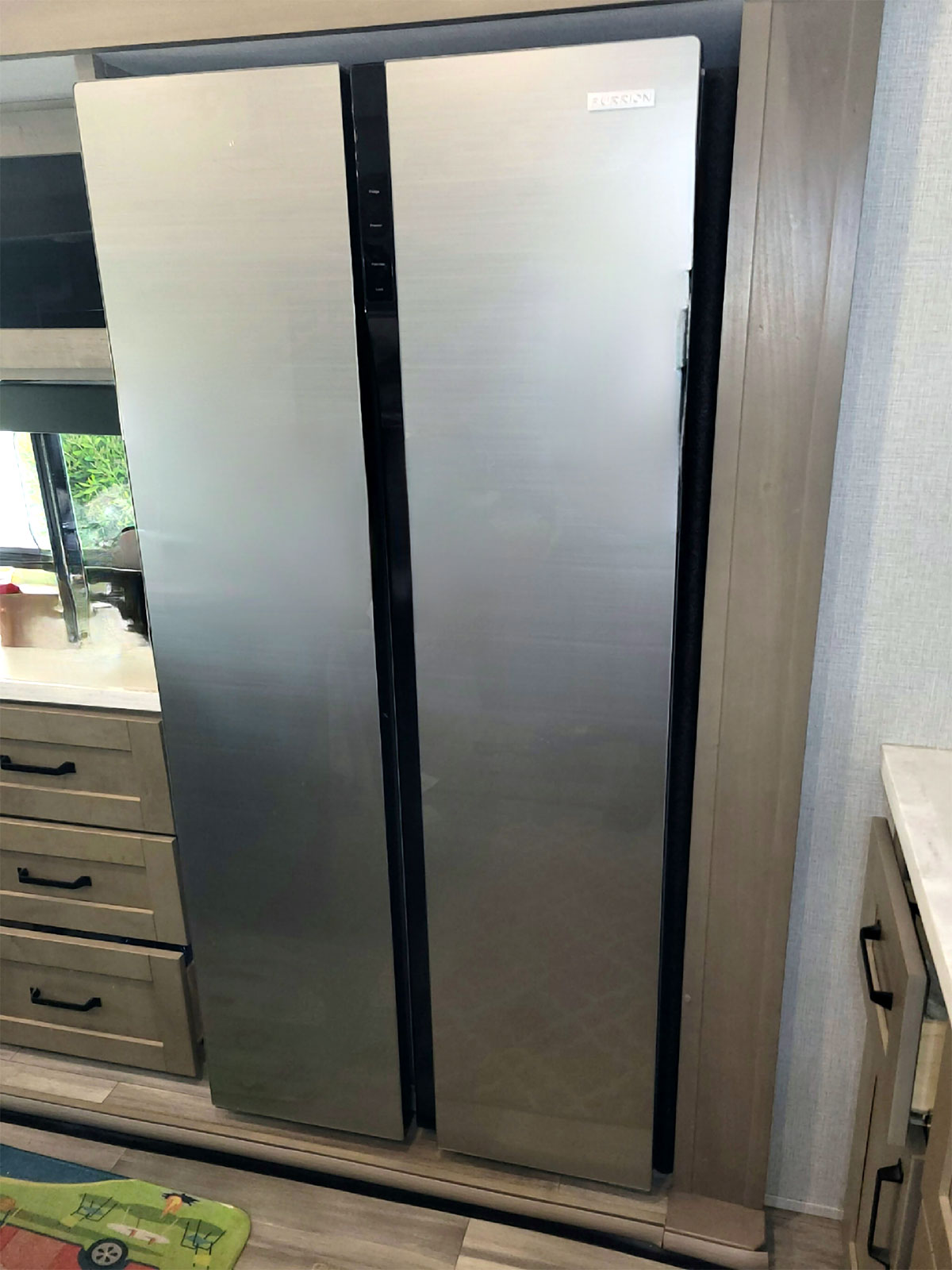
The foam pipe insulation, while preventing debris from working into the gaps, complemented the black accents on the stainless-steel-looking refrigerator doors. While we were at it, the same pipe foam was used to insulate the water lines that ran to the shower and bathroom sink (not shown).
Then, while I was working with the pipe insulation, I had an epiphany. Why not also insulate the hot water lines under the floor that run up to the shower and bathroom sink? So back to the store I went.
Without operating the furnace, heat cannot circulate into the compartment where the water lines are routed, so the area can get really cold — and so do the water lines. Because I typically use the fireplace and another electric heater rather than running the furnace, this can be a problem. When I shut the water off while soaping up in the shower, for example, the Pex tubing cannot hold the heat, so I’m splashed with colder water when turning the valve back on. I was pleasantly surprised how much of a difference the pipe insulation made in taking a comfortable shower. Of course, that was after I’d mentally kicked myself for not thinking of it sooner.
Already a Subscriber? Click here for Access to the Full Issues.

